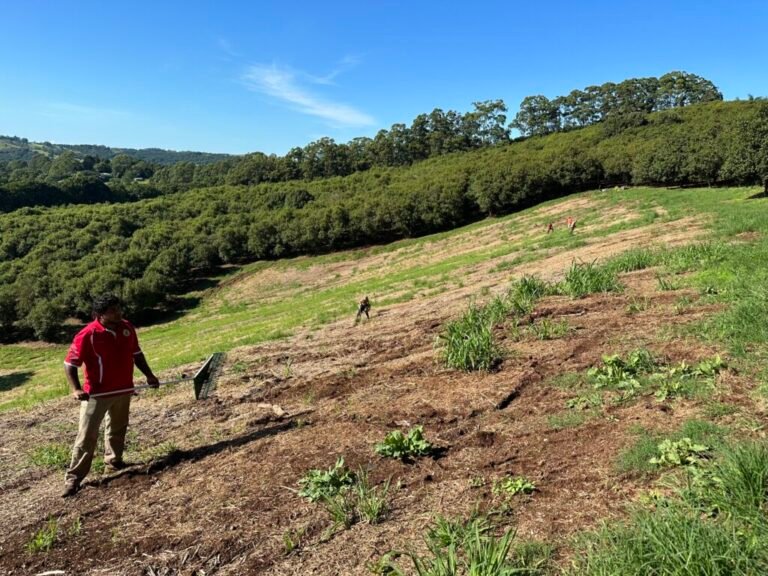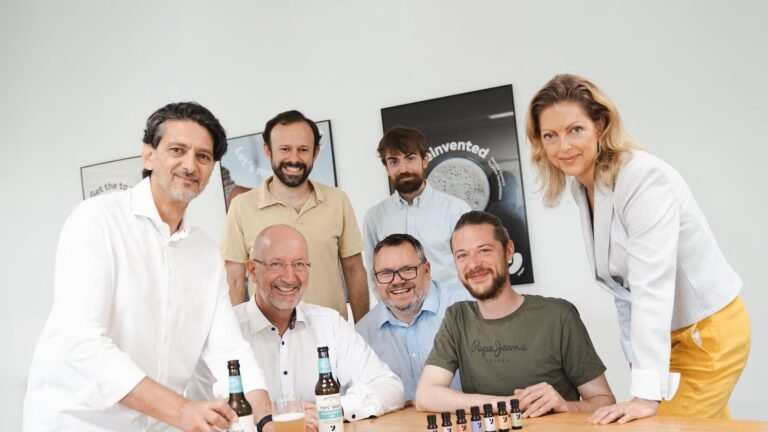Hannah Johnson is industry lead at The VINE, a program hosted by UC ANR’s Office of Innovation and run by agtech venture firm Farmhand Ventures to meet the need for practical, industry-driven innovation in California’s agrifood sector. Micki Seibel is operating partner at Farmhand Ventures.
The views expressed in this article are the authors’ own and do not necessarily represent those of AgFunderNews.
In California, farmers are facing an unlikely enemy: trees. Rather, what’s left of them. As nuts are harvested and orchards and vineyards are pruned, replanted, or torn out, piles of woody debris—branches, trunks, nutshells—accumulate across the landscape. Without effective disposal options, this material clogs operations, degrades soil, attracts pests, and contributes to economic and environmental strain.
For decades, the solution was simple: burn it. But that chapter is closing. As of January 2025, open agricultural burning is fully banned in the San Joaquin Valley. Simultaneously, California’s biomass energy sector—once a robust system that converted this detritus into electricity—has withered. Aging plants can’t compete with cheaper, cleaner, solar and wind. Most biomass energy plants were shuttered, their infrastructure outdated and their contracts expired.
So what now? That’s the question we posed to a cross-section of growers, researchers, and policy experts (you can read about that here). Their answers shared a common refrain: the problem isn’t a lack of ideas, but a lack of integration. The technologies exist. The capital exists. But California lacks a framework for scaling practical, local systems that fit the messy realities of modern agriculture.
And yet, there is reason for optimism.
The anatomy of a solution
Solving California’s agricultural biomass crisis doesn’t require a silver bullet. It demands a portfolio approach grounded in four principles: decentralization, co-location, economic realism, and regulatory clarity.
Why a portfolio? Because California agriculture is anything but monolithic. Its systems are as diverse as its topography, ranging from massive orchards in the Central Valley to coastal fields of fruits and vegetables.
Over 400 agricultural commodities are grown, making California the most agriculturally diverse state in the country. A one-size-fits-all solution simply can’t meet such varied needs. Some regions have access to grid infrastructure or industrial partners; others are isolated, resource-constrained, and operating on thinner margins. That heterogeneity demands flexibility: different technologies, different business models, different policy levers calibrated to local conditions.
1. Decentralization: smaller, smarter systems
Large-scale biomass plants are being shuttered because the energy they produce is too expensive to compete with solar and wind, and the aging technology no longer meets modern air quality standards. The future lies in modular, distributed technologies: mobile pyrolysis units, on-site digesters, and scalable composting systems that meet farms where they are.
Some startups are developing portable carbon removal systems, including mini gasifiers and mobile air curtain burners designed to serve multiple farms within a single region. These units are promising, but they require field trials, targeted policy support, and streamlined permitting to reach commercial viability. They offer a better match between technology and terrain.
2. Co-location: from waste to resource
Woody biomass shouldn’t be treated as garbage. It’s raw material—carbon in physical form—that can become biochar, compost, renewable fuel, new organic materials for textiles and inks, if processed appropriately. However, the economics collapse when that material has to travel long distances to be treated.
That’s where co-location comes in: placing biomass processing near the point of generation. It reduces transport costs, cuts emissions, and encourages integrated ecosystems where farms, processors, and end-users all share in the value chain. Regional biomass hubs could serve as depots where growers drop off waste and receive usable materials in return.
3. Economic realism: aligning costs and incentives
Many current biomass solutions fail because they ask too much of growers. Paying to dispose of waste, then paying again to buy back the byproduct—biochar, compost, or otherwise—is a nonstarter in an industry where margins are already razor-thin.
A more viable model aligns incentives: price supports for soil-enhancing biochar, carbon credits for long-term sequestration, and public contracts for renewable fuels. State-backed low-interest financing or grants could also help growers invest in equipment like chippers, grinders, or small-scale systems.
Responsibility shouldn’t fall solely on farmers—food companies and municipalities whose waste enters the farm ecosystem must be part of the financial solution.
4. Regulatory clarity: enabling innovation at the edge
California’s regulatory framework is notoriously complex. Permitting for biomass systems touches air quality boards, water agencies, waste regulators, and city and county regulators, often with overlapping or contradictory mandates. That bureaucratic gridlock has slowed innovation.
A more agile system is needed, particularly for early-stage technologies and small-scale, on-farm pilots. A one-stop shop for permitting biomass infrastructure would accelerate deployment. Clear exemptions or fast-tracks for projects with emissions or throughput below certain thresholds would provide the breathing room innovators need to prove their concepts.
The bigger picture
The biomass bottleneck is more than a waste-management problem. It’s a question of rural resilience, climate strategy, and agricultural transformation. That pile of orchard prunings is latent carbon. With the right tools, it can be sequestered in soil, converted into clean fuel, or transformed into high-value materials.
But movement isn’t enough. California needs orchestration: a state-level strategy that integrates agriculture, energy, and waste policy; a sandbox for pilots; a fund for scaling; and a carbon marketplace where farmers are active participants.
Today, biomass is a liability. With the right approach, it could become one of California agriculture’s greatest assets in the fight against climate change. That transformation will not come from a singular breakthrough, but from a portfolio of solutions, deployed with intent.
The future of food will not only depend on what we grow. It will depend, more than ever, on what we do with what’s left behind.
The post Guest article: A plan for the pile. Fixing California’s biomass bottleneck appeared first on AgFunderNews.


